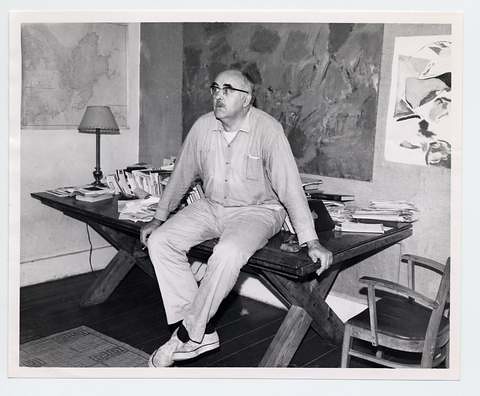Word writing. Instead of ‘idea-writing’ (ideogram etc). That would seem to be it.
Thus begins “Logography,” the second essay, note or section of Proprioception. In the space of one page, Olson makes a couple of basic assertions – that the phoneticization of writing systems comes about from the need to accurately represent proper names & that for a long time after the arrival of phonetic writing, grammatical elements were not indicated. The implication – an important one for a poet whose later writing will often look like notes cast spatially across the page – is that phonetics precedes grammar, both historically & in terms of importance.
This is also unmistakably a shot at Ezra Pound, whose “collaboration” with the late Ernest Fenollosa on ideograms was generative for Pound’s poetry, but also managed to set forth all manner of linguistic myths into the literary culture, partly because Pound was no linguist & partly because Fenollosa wasn’t either.¹ Thus Olson’s concern with “abt the earliest business we can know anything abt, some Sumerian traders in cattle” is not with the detail, the economics of the exchange, but the actual sequence of sounds involved:
Try saying that fast three times. Just two firm consonants, r and k, around which vowels are placed in various sequences.
The third section or note of Proprioception is interesting on at least two dimensions. One is that as almost a footnote – its title is “Postscript to Proprioception & Logography” – this piece suggests that Olson has not, at this point anyway, sketched out the larger plan of this project & that the remaining six sections will be as much a surprise to him as to us.
The other is the pair of terms raised up here as foundational: Landscape – Olson italicizes it – and NOUN (O. puts it all in caps), which he terms “fundamentals of any new discourse.” Beyond these words, as such, it’s worth pausing to think about why, exactly, Olson feels the need for a “new discourse,” what that phrase conveys for him. It’s one thing, at the outset of his project in 1950, to be seeking a new discourse, but to be doing so 12 years later positions it differently, as more of a permanent desire, that discourse itself be subject to the old modernist dictum: make it new.
Landscape is space – a key term for Olson throughout his career – but space of a particular kind, that “which the eye / can comprehend in a single view.” In a sense, landscape would appear to be to space what proprioception would be to the self or soul, that which we can grasp intuitively, or as Olson phrases it, “know it / instantly.”
There is a spatial break midway down the page before Olson tells us:
The other knowing is NOUN, proper (proprius)
noun – that which belongs to the self
Proprius is a term we have already met here, rooted deep in proprioception. Thus Olson sets up that which is not the self, the landscape & the nouns that occupy that space.
¹ Realistically, no one was in any meaningful sense prior to the work of Saussure, whose course on general linguistics was first taught in 1906, just two years before Fenollosa died, and whose ideas didn’t become widely understood until after the 1960-62 timeframe in which Olson composed Proprioception. Thus Finnegans Wake, to pick one lurid example, proceeds from Joyce’s understanding of 19th century philology, a fatal starting point. Saussure’s notes, cobbled together by his students after his death in 1913, spread first to the Prague School of Linguistics & then more broadly into cultural theory through the work of Claude Levi-Strauss, who was introduced to the ideas while attending a course of Jacobson’s at the New School during World War 2, but whose own writing did not become popular in the U.S. until after Olson crafted Proprioception. Olson’s own conception of anthropology, never very far from the surface of his own poetics, is very much pre-structuralist in its assumptions & vocabulary. Olson must have known the work of the likes of Sherry Anderson & Margaret Mead & all the gentlemen Egyptologists who were plundering the pyramids, but hardly any of the authors who would make anthropology one of the great pop successes of the 1960’s academy. The ghosts that Olson is tackling here are all gone a decade later.






